Most homebrewers learn how to achieve a workable crush by trial and error. They may start by reading descriptions of how crushed malt should look like. (For example, it should contain X% big pieces of husk, Y% small pieces of endosperm (coarse grits) and Z% fine grits and flour. About a third of each is one standard description.) They may look at pictures in a book or magazine of properly crushed malt and then proceed to experiment on their own, crushing progressively more finely to get better extract efficiency and stopping when they encounter lautering problems. While the trial and error methods works in practice — at least eventually — there is an objectively way measure your mill output before mashing. This would allow you to fine tune your crush before mashing the grains, including when you switch mills or mill grains that require a mill gap adjustment. The method involves sifting the mill output through a series of sieves and weighing the amount of material retained on each sieve.
Archives for September 2013
Tweaking a Wine Kit
As Rich Weaver points out in a previous article, wine kits are a great way to start exploring winemaking — especially if you are already a homebrewer and have much of the equipment you need in your brewery. However, many homebrewers may chafe at having to follow the instructions and wish to experiment with their wine kit. This is great, but there are a couple things you should know before doing so.
A wine kit is designed to be reasonably foolproof and to deliver a quality wine under the reasonable amount of variation that would be expected when winemakers of various experience levels make them. In addition, wine kits are designed to ferment and mature quickly, be bottled young and be ready to drink in a short amount of time. That amount of time varies, depending on the kit, but 4–6 weeks is a common timeframe. Given that knowledge, here are few things you can try to tweak your kit wine.
Spicing Your Winter Warmer
Some winter warmers are spiced. In the best cases, the spice melds with the beer and makes it a pleasant drinking (or sipping) experience. In the wort cases, a poorly-spiced beer can be undrinkable. Choosing completely inappropriate spices or, much more commonly, getting the spicing too strong can ruin an other wise great batch of beer.
What Spices to Use
There are many different spices out there. Even a fairly small grocery store will stock at least 40 or so, and a specialty supermarket might stock a couple hundred. If you’re looking to add some spice to your winter warmer, what you should you add? I have three pieces of advice. These are just my opinion, but I think they will steer brewers in the right direction. First, stick to just one spice, or at most a few you know work well together. Don’t just dump your entire spice rack into your brew, willy-nilly. Secondly, think about matching the spice (or spice blend) to the characteristics of your beer. I’ll give a few suggestions below. Finally, stick to recognizable spices and familiar combinations. A winter warmer is supposed to be a comforting beer, not a game of “what the hell is that flavor?” Thinking through common spiced holiday treats may give you an inspiration.
Winter Warmer Recipe
This is a strong, dark, winter warmer recipe with a Scandinavian feel. One difficult thing about spiced ales is getting the level of spicing right. In this recipe, this isn’t a worry since you’re spicing with a spirit (aquavit) whose level of spicing is fairly consistent. If you follow the recipe, the caraway flavor from the aquavit is subtle. Increasing the aquavit to 30 oz. (0.89 L) yields more spice (and alcohol), but is still very drinkable. For homebrew contests, or anytime you’d want a strongly-flavored ale, you can ramp it up to 40 oz. (1.2 L). Extract recipes are given in English and metric units. Scroll down for an all-grain option, serving suggestion, and information about aquavit and caraway.
Fimbulvinter Øl
(Winter Warmer)
by Chris Colby
Malt extract; English units
DESCRIPTION
This a dark, holiday ale whose name roughly translates as “ale for a cold winter.” (“Øl” means beer or ale in Norwegian and Swedish and “fimbulvinter” is a long or harsh winter, named after the 3-year winter that precedes Ragnarök in Norse mythology.) This ale is spiked with aquavit, a Scandinavian spirit spiced with caraway. This transforms the 8% ABV dark ale into a 9% ABV spiced ale.
IPA Experiment
The chloride-to-sulfate ratio in your brewing liquor influences the perception of your beer. Adding chloride to your water, usually in the form of calcium chloride, makes your beer more “rounded” and accentuates the malt. Adding sulfate, usually in the form of calcium sulfate (from gypsum), accentuates the hop bitterness. We’ve designed an experiment to test if this is true, if you can adjust this ratio in finished beer and which ratio works best in an IPA (or other hoppy ale). The last one is the biggie, here. The first idea is well-accepted and there’s anecdotal evidence that the second is true.
German Wheat Beer: VI (Bottle Conditioning)
This is the sixth and final part in a series on German wheat beers. The first part was posted September 3rd. There was also a chemistry supplement and two example recipes — one all-grain, one extract.
Once your wheat beer is fermented, it’s time to package it. Most commercial hefe-weizen is bottle conditioned. A few breweries keg their beer, but it can be difficult to dispense a beer that is so carbonated.
In his book, “German Wheat Beer” (1992, Brewers Publications) Eric Warner gives the range of carbonation in wheat beers as 2.8 to 5.1 volumes of CO2, with the average being 3.9. This carbonation floats the foam on a wheat beer, which is more voluminous than most other beer styles. It also, obviously, makes the beer taste somewhat fizzy and gives it a bit of a “bite” (which was recently discovered to be from carbonic acid). [Read more…]
Brew in a Bag Basics
If you went through corporate training in the 1990s or saw the demonstration reel for the Video Toaster, you’re familiar with the term “paradigm shift.” Brew in a bag (BIAB) is a paradigm shift for all-grain homebrewing — a new way of thinking that is a break from the past.
Traditional thinking for all-grain brewing says you need three vessels: one to use as a hot liquor tank for heating water, another to use as a mash tun where wort (unfermented beer) is created, and a third where the wort is boiled and hops are added. BIAB calls for just one vessel – your brew kettle, where all of the above functions will happen. [Read more…]
Drain Your Lauter Tun

If you do it right, you can finish wort collection with an empty lauter tun and your full pre-boil wort volume.
If you’re a homebrewer, like me, who uses continuous sparging (also called “fly sparging”), you might end your wort collection with a lauter tun full of liquid. At least, that’s how I used to do it. I kept adding sparge water right up to the point that I quit collecting wort, leaving weak wort under my false bottom, in my grain bed and water standing on top of the grain bed. Not only was this water wasted, but I’d used some propane to heat it and I still needed to drain it before I cleaned out my lauter tun. Later I figured out, with a little planning, I could stop sparging at the right point, let the grain bed run dry and hit my target pre-boil volume. There are two ways you can do this.
Residual CO2 and Priming Sugar
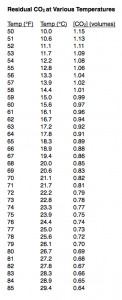
Residual CO2 as a function of temperature. (Click on picture to enlarge.) This assumes the beer is at standard pressure.
When you bottle condition a beer, you add priming sugar to the bottle and seal it. The brewers yeast in the beer ferment the sugar and release ethanol and carbon dioxide (CO2). The carbon dioxide that is released inside the bottle is trapped, since the bottle is sealed. As such, the level of carbon dioxide pressure in the bottle increases and, in turn, the level of dissolved CO2 in the beer increases.
Different beers are carbonated to different levels. English ales may have carbonation levels as low as 1.5 volumes of CO2 whereas German weizens may top 5.0 volumes of CO2. Most American craft beers are in the range of 2.5–2.6 volumes of CO2.
Brew Your Winter Warmer Now
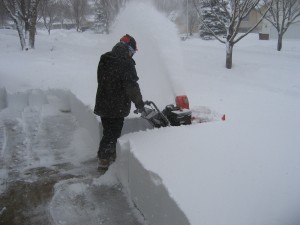
Depending on where you live, this might be right around the corner. Don’t you want a nice winter beer waiting for you when you’re done?
Now is a great time to brew this year’s winter warmer. Winter warmers (holiday beers, Christmas beers, etc.) span a lot of ground when it comes to their flavor and aroma. However, more often than not, they tend to be strong, dark, spiced ales. Because they are both strong and spiced, brew them a couple months in advance to give them the chance to age into their peak condition. before the holidays.
Covering every kind of special winter beer — or even the most common variants — would be impossible. So I’m going to stick to describing winter warmers of the strong, dark and spicy type because these are the most common (and also my favorite).
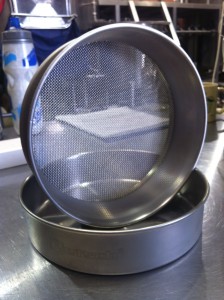
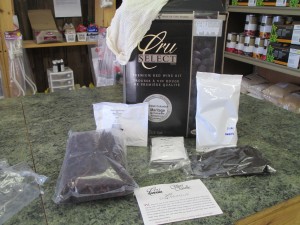



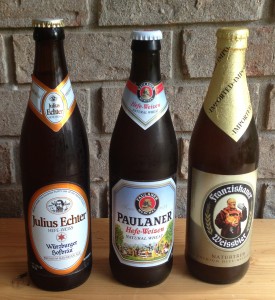
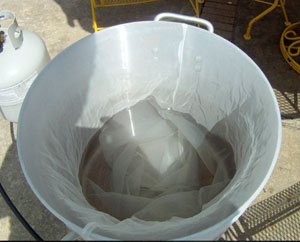

Recent Comments